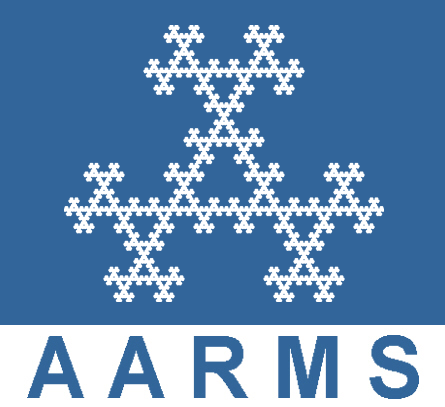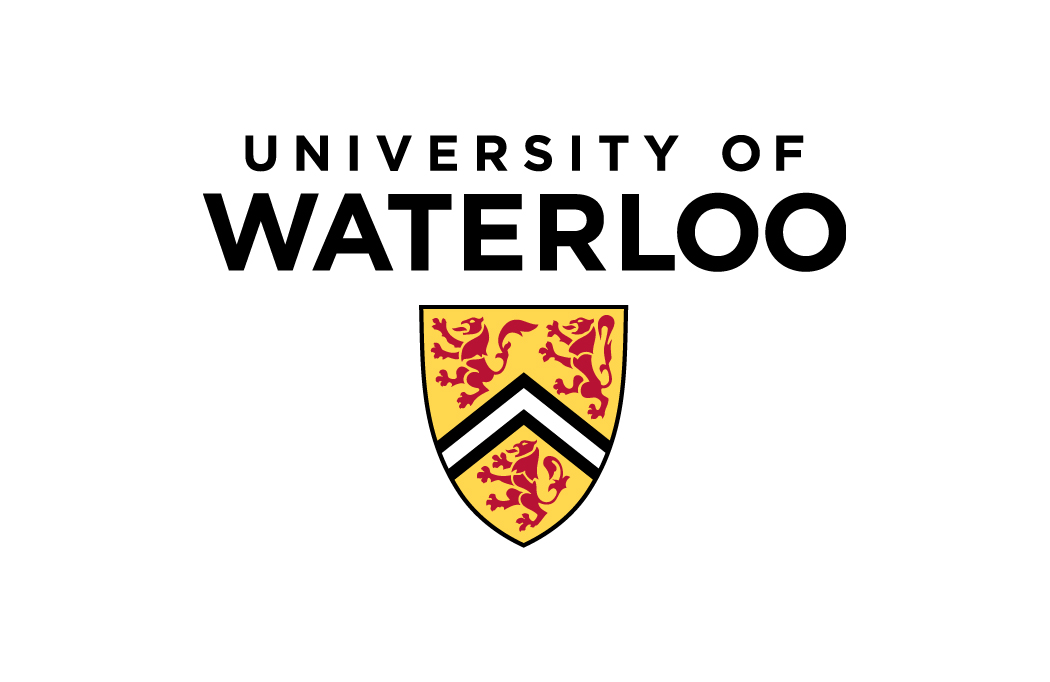2017 CMS Winter Meeting
Waterloo, December 8 - 11, 2017
- SPYROS ALEXAKIS, University of Toronto
Recovering a Riemannian metric from area data. [PDF]
-
We consider the following geometric inverse problem: Consider a simply connected Riemannian 3-manifold $(M,g)$ with boundary. Assume that given any closed loop $\gamma$ on the boundary, one knows the areas of the corresponding minimal surfaces with boundary $\gamma$. Then from this information can one reconstruct the metric $g$? We answer this in the affirmative in many cases, and relate it to a question that originally arose in the contect of the AdS-CFT correspondence. We will briefly discuss the relation of this problem with the question of reconstructing a metric from lengths of geodesics, and also with the Calderon problem of reconstructing a metric from the Dirichlet-to-Neumann operator for the corresponding Laplace-Beltrami operator. Joint with T. Balehowsky and A. Nachman.
- ALI ALEYASIN, University of Waterloo
Remarks on singular Kähler manifolds [PDF]
-
In certain contexts, singular K\"ahler manifolds are the natural objects to consider. In this talk, I shall discuss some analytical results concerning canonical metrics on conical K\"ahler manifolds.
- TATYANA BARRON, University of Western Ontario
Closed geodesics and pluricanonical sections [PDF]
-
I will talk about holomorphic sections of pluricanonical bundles associated with families of closed geodesics on ball quotients, and asymptotics of inner products.
- ALBERT CHAU, University of British Columbia
Cusp like solutions to Kahler Ricci flow [PDF]
-
In this talk I will discuss the existence of cusp-like solutions $g(t)$ to the Kähler Ricci flow on quasi projective varieties $M$ (in other words, $M=N\setminus D$ for a compact complex manifold $N$ with divisor $D$). A Kähler metric $g$ is called cusp-like on $M$ if it is equivalent to the standard hyperbolic punctured disc model in complex directions approaching $D$. The discussion will include complete solutions to the flow on $M$ emerging from complete initial metrics with unbounded curvature, and also complete solutions to the flow on $M$ emerging from smooth initial metrics on $N$ (thus becoming ``instantaneously complete'' on $M$). The talk will be based on joint work with Ka Fai Li and Liangming Shen.
- XIN DONG, University of California, Riverside
Bergman kernel and its boundary asymptotics [PDF]
-
We study variations of the Bergman kernel and their asymptotic behaviors at degeneration. For a holomorphic family of hyperelliptic nodal or cuspidal curves and their Jacobians, we announce our results on the Bergman kernel asymptotics near various singularities. For genus-two curves particularly, asymptotic formulas with precise coefficients involving the complex structure information are written down explicitly.
- PANAGIOTIS GIANNIOTIS, University of Toronto/Fields Institute
The bounded diameter conjecture for 2-convex mean curvature flow [PDF]
-
In this talk I address the bounded diameter conjecture for the mean curvature flow of smooth 2-convex hypersurfaces in $\mathbb R^{n+1}$. In joint work with Robert Haslhofer, we prove that the intrinsic diameter of the evolving hypersurfaces is controlled, up to the first singular time, in terms of geometric information of the initial hypersurface. Moreover, this diameter estimate leads to sharp $L^{n-1}$ estimates for the curvature at each time.
Our estimates extend to mean curvature flow with surgery, which allows us to obtain the optimal $L^{n-1}$ estimate even for a level set flow starting from a smooth 2-convex hypersurface. This improves the $L^{n-1-\epsilon}$ curvature estimate that was previously established in work of Head and Cheeger-Haslhofer-Naber.
- ROBERT HASLHOFER, University of Toronto
Minimal two-spheres in three-spheres [PDF]
-
We prove that any manifold diffeomorphic to $S^3$ and endowed with a generic metric contains at least two embedded minimal two-spheres. The existence of at least one minimal two-sphere was obtained by Simon-Smith in 1983. Our approach combines ideas from min-max theory and mean curvature flow. We also establish the existence of smooth mean convex foliations in three-manifolds. Finally, we apply our methods to solve a problem posed by S. T. Yau in 1987, and to show that the assumptions in the multiplicity one conjecture and the equidistribution of widths conjecture are in a certain sense sharp. This is joint work with Dan Ketover.
- JACQUES HURTUBISE, McGill University
The geometry of Calogero Moser systems [PDF]
-
The Calogero Moser Integrable system is easy to define, though in full generality its complete set of Hamiltonians and a suitable Lax formulation took a very long time to formulate, only appearing in the work of Bordner, Corrigan and Sasaki about twenty years ago. The geometry of the system was elucidated a few years later, relating the systems to Hitchin type systems, not on a curve, but on an Abelian variety. Revisiting it recently, it turned out that it the description could be simplified a great deal through a Fourier-Mukai transform. Joint work with Indranil Biswas.
- MOHAMMAD IVAKI, University of Toronto/ Fields Institute
On the classification of ancient solutions to curvature flows on the sphere [PDF]
-
An ancient solution to a curvature flow is a solution that exists backwards in time forever. In this talk, I will discuss the classification of ancient solutions to curvature flows on the sphere. I will prove that the sphere exhibits a very strong rigidity: any ancient solution of a curvature flow which satisfies a backwards in time uniform bound on mean curvature must be stationary or a family of shrinking geodesic sphere. The main tools are geometric, employing the maximum principle, a rigidity result in the sphere and an Alexandrov reflection argument. This is joint work with Paul Bryan and Julian Scheuer.
- JEFF JAUREGUI, Union College
Bartnik’s quasi-local mass in general relativity [PDF]
-
In general relativity, the quasi-local mass problem is to find a ``good'' definition for the amount of mass contained within
a compact 3-dimensional spatial region, $\Omega$. Bartnik’s definition considers all possible asymptotically flat extensions of $\Omega$ (subject to certain natural geometric conditions), and minimizes the total (ADM) mass among such spaces. He conjectured that this infimum is attained. In joint work with Michael Anderson, we show that for a large family of regions, the infimum is not achieved. I will discuss our recent results, including (time-permitting), further results pertaining to Bartnik mass minimizers and static vacuum solutions of Einstein’s equations.
- AKOS NAGY, University of Waterloo/The Fields Institute
Irreducible Ginzburg--Landau Fields in dimension 2 [PDF]
-
Ginzburg–Landau fields are the solutions of the Ginzburg–Landau equations which depend on two positive parameters, $\alpha$ and $\beta$. We give conditions on $\alpha$ and $\beta$ for the existence of irreducible solutions of these equations. Our results hold for arbitrary compact, oriented, Riemannian 2-manifolds (for example, bounded domains in $\mathbb{R}^2$, spheres, tori, etc.) with de Gennes–Neumann boundary conditions. We also prove that, for each such manifold and all positive $\alpha$ and $\beta$, Ginzburg–Landau fields exist for only a finite set of energy values and the Ginzburg–Landau free energy is a Palais–Smale function on the space of gauge equivalence classes.
- CHRISTINA TONNESEN-FRIEDMAN, Union College
Admissible Kaehler metrics on a certain complex three manifold [PDF]
-
In this talk I will discuss various nice admissible Kaehler metrics on the three dimensional complex manifold $M=P({\mathcal O} \oplus {\mathcal O}(1,-1))\rightarrow {\mathbb C}{\mathbb P}^1 \times {\mathbb C}{\mathbb P}^1$. Due to work by A. Hwang and D. Guan, every Kaehler class on this manifold admits extremal Kaehler metrics as defined by E. Calabi and some of these extremal metrics have constant scalar curvature (CSC). Moreover, by the famous result of N. Koiso and Y. Sakane, one of these metrics is even
Kaehler-Einstein metric. Based on recent work with C. Boyer and D. Calderbank I will talk about an interesting equivalency ($c$-projective equivalency) that occurs between some of the CSC Kaehler metrics on $M$. Further, based on recent work in progress with V. Apostolov and G. Maschler, I will present another special type of Kaehler metrics that live on $M$, namely conformally Kaehler Einstein-Maxwell metrics.
- ALEX WALDRON, Stony Brook University
Yang-Mills flow in dimension four [PDF]
-
Among the classical geometric evolution equations, YM flow is the least nonlinear and best behaved. Still, in the critical dimension, curvature concentration is a subtle problem. I'll discuss my proof of long-time existence, and time permitting, describe the infinite-time picture.
- CHANGLIANG WANG, McMaster University
Perelman's functionals on compact manifolds with conical singularities [PDF]
-
We extend the theory of the Perelman's functionals on smooth compact manifolds to manifolds with isolated conical singularities. For the $\lambda$-functional, this is essentially an eigenvalue problem for a Schrodinger operator with singular potential. We obtain a certain asymptotic behavior of eigenfunctions near the singularities. This asymptotic behavior plays an important role for deriving the variation formulas of the $\lambda$-functional and other applications. Moreover, we show that the infimum of the $W$-functional over a suitable weighted Sobolev space on compact manifolds with isolated conical singularities is finite, and the minimizing function exists. We also obtain a certain asymptotic behavior for the minimizing function near the singularities. This is a joint work with Prof. Xianzhe Dai.





